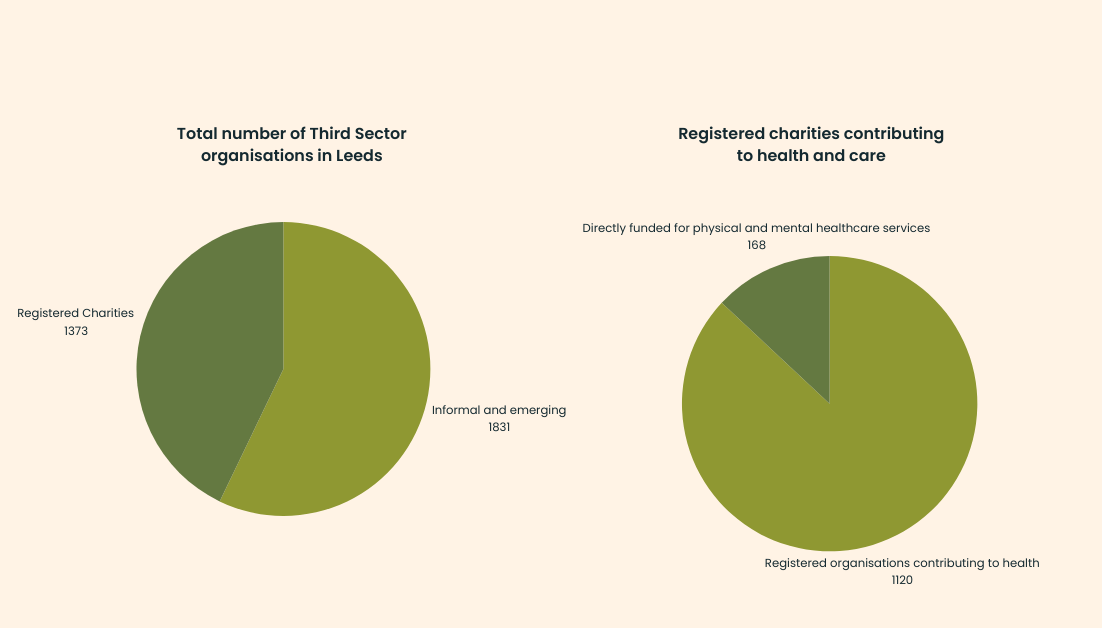No Local Authority is an island
Very few organisations have quite the vast scope of responsibilities as a Local Authority, from housing to healthcare, green spaces to public events. Even vaping companies are attempting to throw the clean-up of their disposable products at the council's feet.
But within those areas that fall under a council’s remit, there are private companies, charities, and social enterprises that have a shared interest, even if the ultimate authority doesn’t rest with them. Businesses have the luxury to focus on a singular area of expertise that can help guide and streamline, whilst there are community services that exist to cater to a very specific need, such as tackling loneliness.
There are countless opportunities for all teams within councils to tap into resources that exist outside their organisation, whether that’s Digital Teams looking to replace legacy systems for something more nimble, or Adult Social Care trying to prevent, reduce and delay demand on their services by making support information more easily accessible.
This collaboration is mutually beneficial. Businesses and third-sector organisations can support the huge weight of responsibility on often resource-strapped councils, while they enjoy increased visibility and the opportunity for new business.
Why collaboration is vital now more than ever
The very fact that councils are facing huge financial pressures can be a barrier to outsourcing, while the idea of engaging with external community services can be off-putting to a time-starved team. But given that initial outlay of time and money can build partnerships that encourage a united front to achieve a common goal, it’s worth it.
Frameworks such as G-Cloud offer a carefully vetted window into suitable services for Local Authorities, but government organisations can benefit from looking beyond their own infrastructures to their doorstep, where there are a wealth of existing services that can provide the kind of support they themselves don’t have the capacity to manage.
In Leeds alone, where we’re based at Ayup Digital, there are 3,204 registered and emerging/informal charity organisations, 1,288 of which contributed to health and care across the city and its suburbs.

When we’ve revisited the journey our council clients took to arrive at their directory platforms and information hubs, they reflect on how much time it took to engage with the community in the early research phases of the project. But fast forward to the deployment of their community assets, Sutton Information Hub, Hounslow Connect, and Connected Kingston, and the collaboration and effort payoff shows.
Now, instead of rolling something out without consulting the community, they’ve worked with the community to create something fit for purpose. Ultimately, they’ve saved themselves time and resources, and in the long term, they’ve built a strong ecosystem of like-minded organisations working towards a shared interest. As Kingston Council says,
There’s no hierarchy, and we can support the voluntary sector and celebrate what they’re doing. It feels more inclusive as we work together on a shared community asset.
How Royal Borough of Kingston worked with others to flatten the hierarchy
In 2018, the Royal Borough of Kingston recognised gaps in how information about services was presented, causing residents to struggle to find the necessary help. Through extensive research and collaboration, Kingston's Public Health team, along with Ayup Digital, aimed to address this issue by creating a centralised information hub called Connected Kingston.
The project involved securing funding from government bodies and engaging with stakeholders, including the NHS, to ensure alignment with broader health initiatives like social prescribing. Kingston wanted to work with us at Ayup Digital because we were able to engage with a wide range of stakeholders effectively across the community.
Connected Kingston emerged as a dynamic platform, facilitating collaboration between the council and voluntary organisations, and promoting inclusivity and community engagement. Reports showed significant community uptake and engagement, with over 37,810 visitors to Connected Kingston, or just over 22% of the borough’s population, in 2023.
With over 610 services listed from 344 organisations, Connected Kingston exemplifies effective collaboration between government and non-governmental organisations, providing a single source of truth for residents, created in partnership with us at Ayup Digital, a private company that prioritises tech for good.
The opportunity to innovate needs room to collaborate
Working together is crucial for councils facing financial strains and time limitations. By pooling resources and expertise, Local Authorities can navigate challenges more effectively while enhancing service provision and community engagement. Platforms like Connected Kingston show the power of teamwork between government, industry, and the third sector.
By joining forces, we can create more inclusive and resilient communities, just one of the many reasons it’s so important that Local Authorities allow themselves that space to collaborate, as our Ayup Digital clients have done.
